Picture ancient Earth billions of years ago – a restless planet shrouded in dense clouds, where volcanic peaks pierce through ice-covered oceans. You might imagine it as a barren wasteland, but scientists now believe this lightning-drenched world may have been the perfect laboratory for life’s first spark. The idea that life could have begun in shallow, electrified bodies of water represents one of the most compelling theories in modern origin-of-life research.
The concept challenges our traditional understanding of how biological molecules first formed from simple chemical ingredients. Instead of relying solely on random chance or gentle chemical reactions, this theory suggests that nature’s most dramatic displays of electrical power – lightning strikes numbering in the trillions – may have been the crucial catalyst that transformed lifeless matter into the building blocks of existence.
The Miller-Urey Revolution: When Lightning Met Chemistry
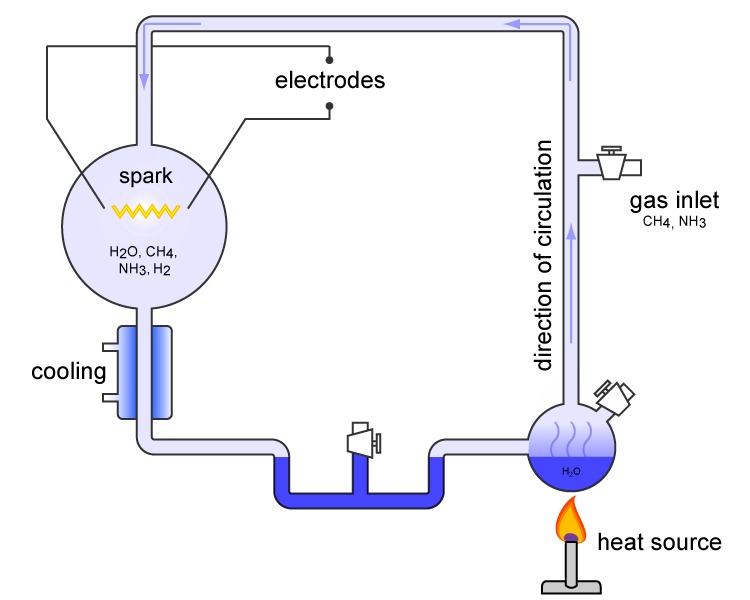
The story begins with a groundbreaking 1952 experiment where Stanley Miller and Harold Urey passed electrical sparks through a container filled with gases simulating early Earth’s atmosphere, resulting in the production of amino acids. These amino acids, the building blocks of proteins, formed quickly, leading Miller and Urey to realize that this process could have paved the way for the molecules needed to produce life.
This experiment gave rise to a new scientific field called prebiotic or abiotic chemistry – the chemistry that preceded the origin of life. What seemed like a simple laboratory demonstration actually opened an entirely new way of thinking about life’s origins. The implications were staggering: if electrical discharges could create complex organic molecules from simple gases, then early Earth’s lightning-filled atmosphere might have been nature’s own chemical laboratory.
Beyond Atmospheric Lightning: The Power of Volcanic Storms
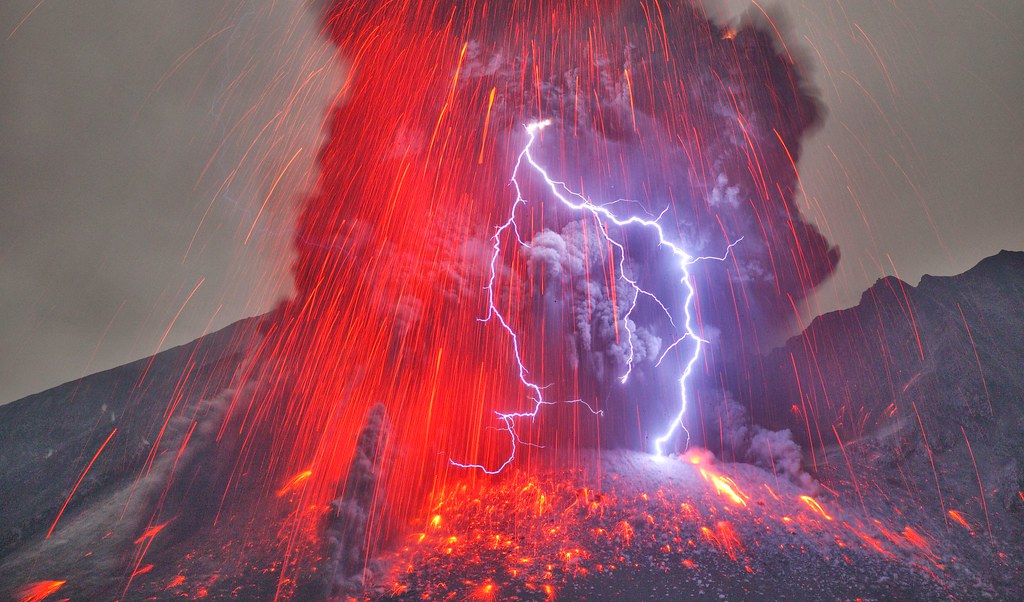
Lightning is often generated within ash clouds during volcanic eruptions, having been reported at nearly 400 eruptions of 152 volcanoes, creating spectacular displays that have been noted throughout history. A recent example is the massive Plinian eruption of the Hunga Tonga-Hunga Ha’apai volcano in 2022, which sent ash, gases, and vaporized seawater in a plume reaching over 50 km into the mesosphere, creating the perfect combination for lightning generation and resulting in unprecedented lightning activity with hundreds of thousands of strikes.
Increased plume-related magmatic activity on the young Earth implies that hot spot volcanism would have been present on the early Hadean Earth, with volcanic islands poking out above the ocean surface, providing an important lightning source and focal point for generating the ingredients necessary for life’s origins. These volcanic islands weren’t just sources of lightning – they were complete prebiotic factories.
Lightning as Nature’s Phosphorus Supplier
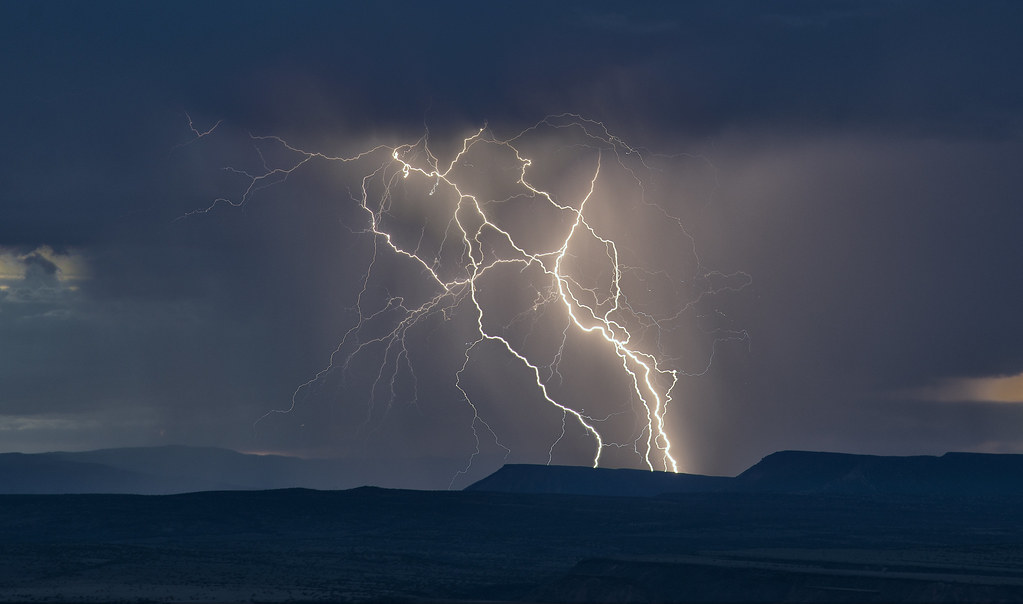
Lightning strikes may have produced enough schreibersite on early Earth to help kickstart life, potentially forging 110 to 11,000 kilograms of phosphorus-containing compounds each year from about 4.5 billion to 3.5 billion years ago. Phosphorus is essential for making DNA, RNA, ATP (the energy source of all known life), and other biological components like cell membranes.
When a bolt of lightning strikes the ground, it can create glassy rocks called fulgurites by super-heating and sometimes vaporizing surface rock, freeing phosphorus locked inside, and these fulgurites can contain schreibersite. The discovery represents a fundamental shift in understanding how life accessed this crucial element. Scientists calculated that lightning strikes made upwards of 10,000kg of phosphorus available for organic reactions every year, and lightning probably provided as much reactive phosphorus as meteorites did around the time of the origin of life.
The Formation of Prebiotic Microreactors

Lightning experiments in borosilicate reactors revealed that a micrometer-thick silica-induced organic film covers the walls of reactors and floats at the water-gas interface, formed by aggregation of HCN-polymer nanoclusters whenever water is present. The organic film morphs into micrometer-scale biomorphic vesicular structures hanging into the water, and these structures are hollow and may act as microreactors facilitating chemical pathways toward increasing complexity.
The concomitant formation of poly-HCN microreactors and prebiotic organic molecules induced by silica would turn the waters of early Earth into an organic chemistry laboratory at the planetary scale, where chemical complexity can further develop through temperature, UV irradiation, and dry-wet cycles. These weren’t just random chemical reactions – they were organized, structured processes that could lead to increasingly complex molecular arrangements.
Experiments have produced all the amino acids found in living things, all essential sugars, triphosphate nucleotide precursors needed for DNA and RNA synthesis, aldehydes, carboxylic acids, and others by simply mixing inorganic molecules and energy. Simulations done by Miller in the 1950s but analyzed recently sought to understand prebiotic chemistry in volcanic plumes, detecting at least 7 sulfur-bearing organic molecules, including methionine.
The efficiency of these processes was remarkable. Miller found that up to 10% of all carbon atoms could be incorporated into organic molecules and up to 2% incorporated into amino acids. This wasn’t just a lucky accident – it suggested that the conditions on early Earth were remarkably well-suited for organic synthesis.
Volcanic Islands: Perfect Storm Environments
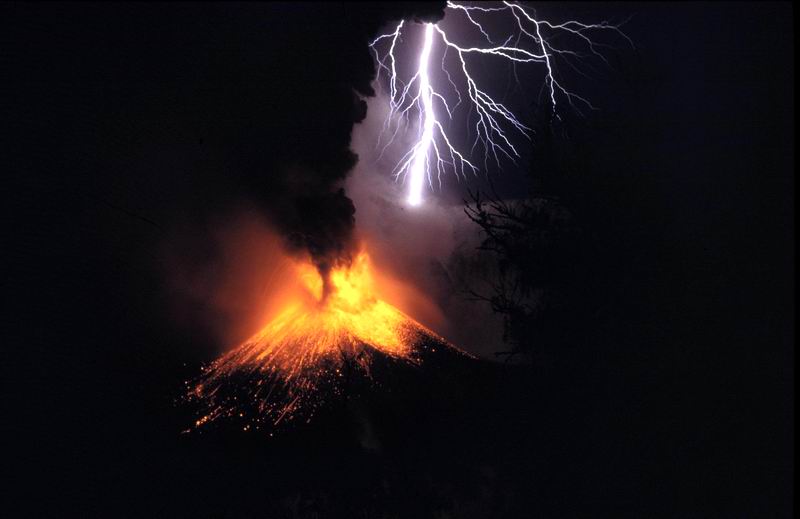
The discharged water from eruptions would have produced lakes, pools, and ponds on volcano flanks, and there would have been volcanic rock pools along the volcano-ocean shoreline where seawater and rainwater could have collected. In these various watery environments, temperatures could cycle between cool and warm conditions, and these temperature cycling events, along with evaporative wet-dry cycles, have been shown to promote important prebiotic polymerization reactions of amino and nucleic acids.
Hot spots, where magma pushes through weak places in Earth’s crust to reach the surface, created volcanic islands and were probably a relatively large portion of what land there was in the planet’s first years. These environments offered something that vast oceans couldn’t provide – concentration. While organic molecules would have been diluted to insignificance in the open ocean, volcanic pools could concentrate these precious building blocks to levels where meaningful chemistry could occur.
The Lightning Frequency Factor

On Earth today, we experience about 25 million ground lightning strikes per year, but on early Earth, that number was anywhere between 1 and 5 billion annually, with 100 million to 1 billion of those striking the ground. Lightning was more prevalent on early Earth because there was more carbon dioxide in the atmosphere, and carbon dioxide contributes to global temperature, with higher global temperature causing more frequent and intense thunderstorms.
Computer modeling estimated that early Earth saw 1 to 5 billion lightning flashes every year, with anywhere from 100 million to 1 billion striking the ground annually, adding up to 0.1 to 1 quintillion strikes after a billion years. The scale is almost incomprehensible – quintillions of electrical discharges, each one a potential chemical factory.
Advantages Over Meteorite Delivery
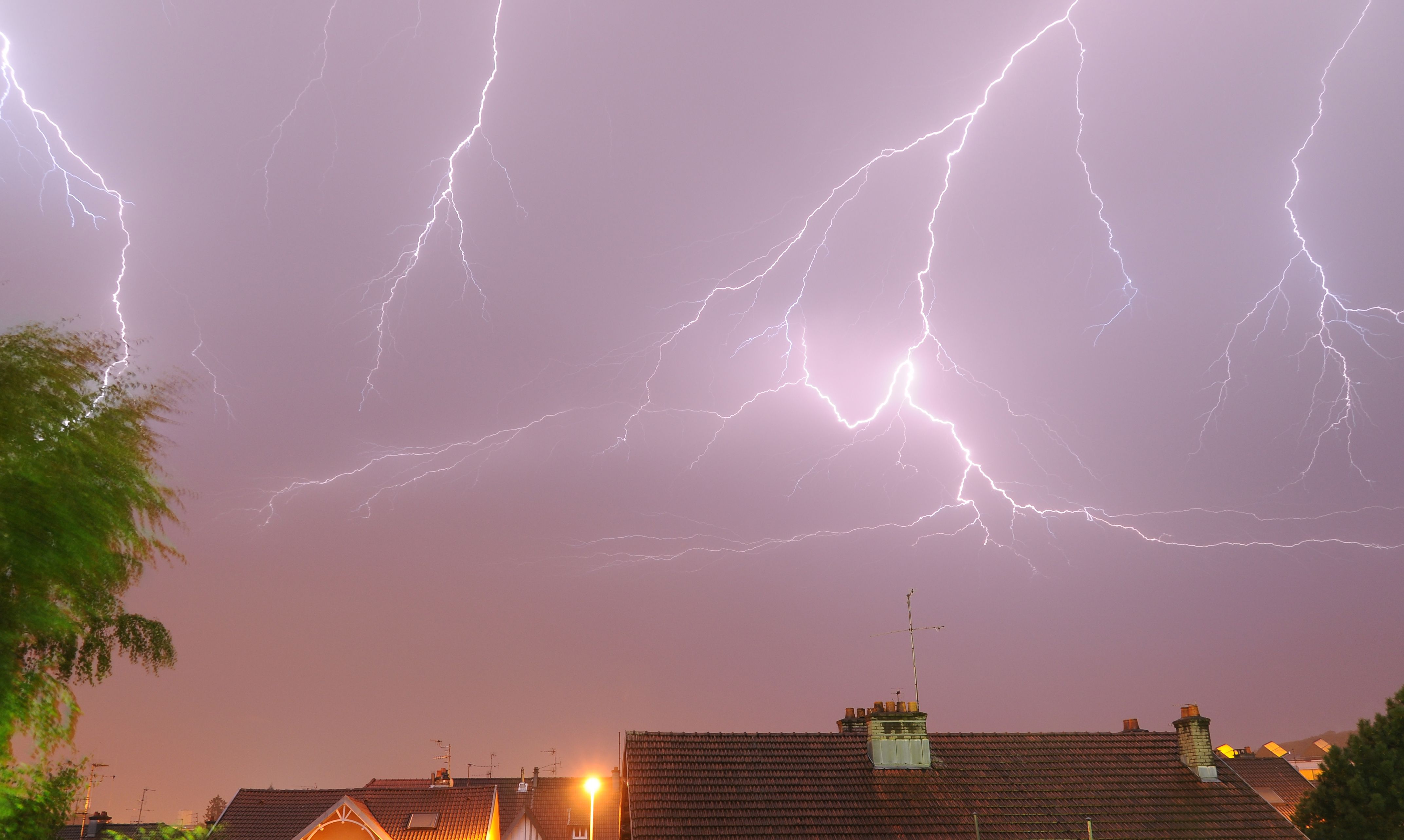
The lightning strike theory has advantages because the annual number of lightning strikes would have remained constant, unlike meteorite collisions, and lightning strikes were likely most prevalent on land masses in tropical regions, providing more concentrated areas of usable phosphorus. Lightning strikes are a more sustainable source of phosphorus than meteorite impacts, as the abundance of large meteorites in a solar system decreases exponentially over time, and while meteorites provide substantial usable phosphorus early in a planet’s history, they decrease fairly rapidly in abundance.
Unlike meteorite impacts which decrease exponentially through time, lightning strikes can occur at a sustained rate over a planet’s history, meaning lightning strikes may be a very important mechanism for providing phosphorus needed for life’s emergence on other Earth-like planets after meteorite impacts become rare. This consistency over geological time makes lightning a more reliable driver of prebiotic chemistry than the dramatic but declining bombardment from space.
The Warm Little Pond Hypothesis Gets Electrified
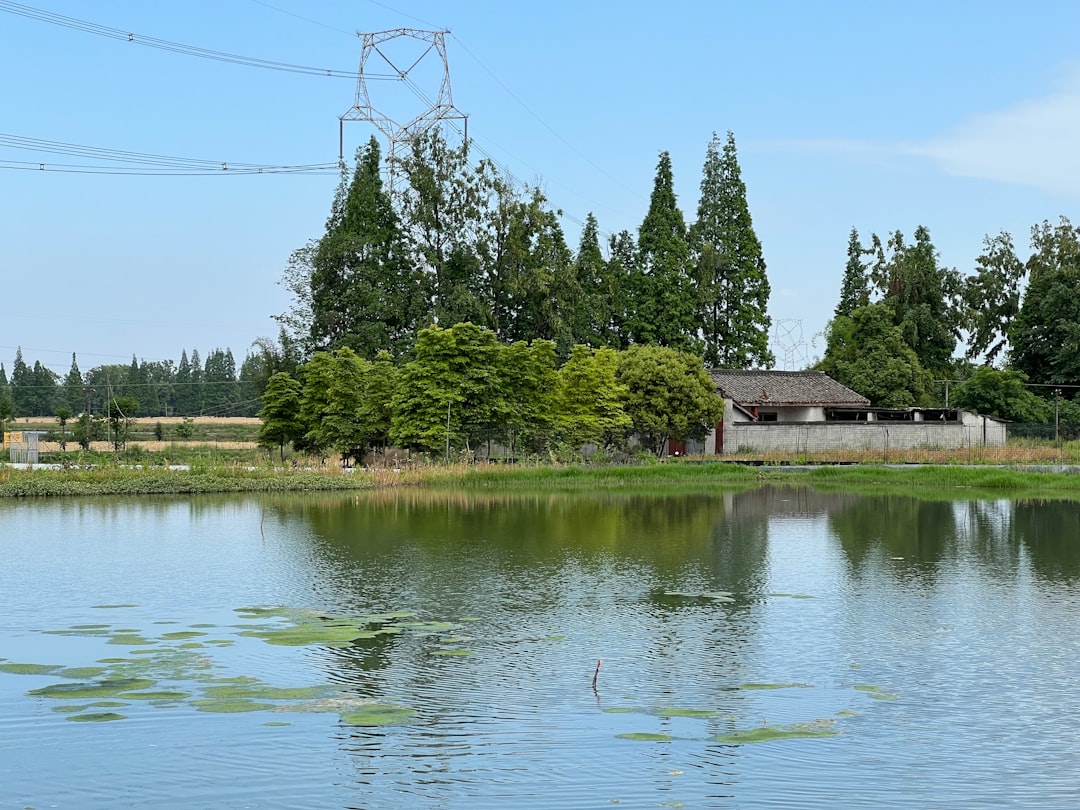
Charles Darwin wrote to botanist Joseph Dalton Hooker in 1871 proposing that abiogenesis may have occurred in a warm little pond “with all sorts of ammonia & phosphoric salts, – light, heat, electricity &c present.” Modern warm little pond hypotheses propose life first developed in shallow water environments on land, such as terrestrial hotsprings or evaporative lakes, associated with conditions many researchers believe may have been conducive to the origin of life, including spatial and temporal heterogeneity.
Freshwater terrestrial lakes might be the most ideal settings for abiogenesis due to the tendency of lipids to spontaneously form vesicles with semi-permeable membranes, which could have led to the first cell precursors, as these structures tend to collapse in brines like seawater. The electrical component that Darwin mentioned so casually may have been more prescient than anyone realized at the time.
Competing Theories: Deep Sea vs Shallow Pools

Recent research adds weight to the alternative idea that life arose deep in the ocean within warm, rocky structures called hydrothermal vents, with studies suggesting the last common ancestor of all living cells fed on hydrogen gas in a hot iron-rich environment. Deep-sea hydrothermal vents represent the only known environment that could have created complex organic molecules with the same kind of energy-harnessing machinery as modern cells.
However, the lightning-lake hypothesis offers unique advantages. The life-through-lightning model is limited to environments with shallow waters where lightning must produce fulgurite in areas where it can dissolve properly to release phosphorus, but where it won’t become lost in a vast body of water, though this limit may not necessarily be a bad thing. The concentration factor in shallow environments may actually be crucial for the chemistry of life’s origins.
Modern Evidence from Extreme Environments

The discovery of extremophiles – microbes that thrive in boiling hot springs, acidic lakes, and deep-sea vents – serves as living analogs for the earliest life forms, showing that life can adapt to astonishingly harsh conditions and dramatically expanding scientists’ understanding of where and how life could arise. These organisms demonstrate that the violent, electrically active environments of early Earth weren’t obstacles to life – they may have been prerequisites.
Many locations have been proposed for life’s emergence, ranging from hydrothermal vents and pumice rafts, through volcanic-hosted splash pools to continental springs and rivers, each with respective advantages and disadvantages. The lightning-lake hypothesis doesn’t exclude these other environments but rather suggests they may have all worked together in a complex network of prebiotic chemistry.
The evidence pointing toward lightning-filled lakes as life’s birthplace continues to grow stronger. From the basic chemistry demonstrated in Miller-Urey experiments to the sophisticated microreactor formation observed in modern studies, the case for electrical discharge as life’s spark becomes increasingly compelling. Whether working alone or in concert with other prebiotic environments, these electrically charged bodies of water may have provided exactly the right combination of energy, concentration, and chemical diversity needed to transform simple molecules into the first living cells.
What fascinates scientists most is how this theory bridges the gap between the dramatic and the mundane – suggesting that life’s origin required both the spectacular violence of lightning strikes and the patient, repetitive chemistry of countless wet-dry cycles. It’s a reminder that the most profound transformations in nature often emerge from the intersection of chaos and order, violence and stability.



